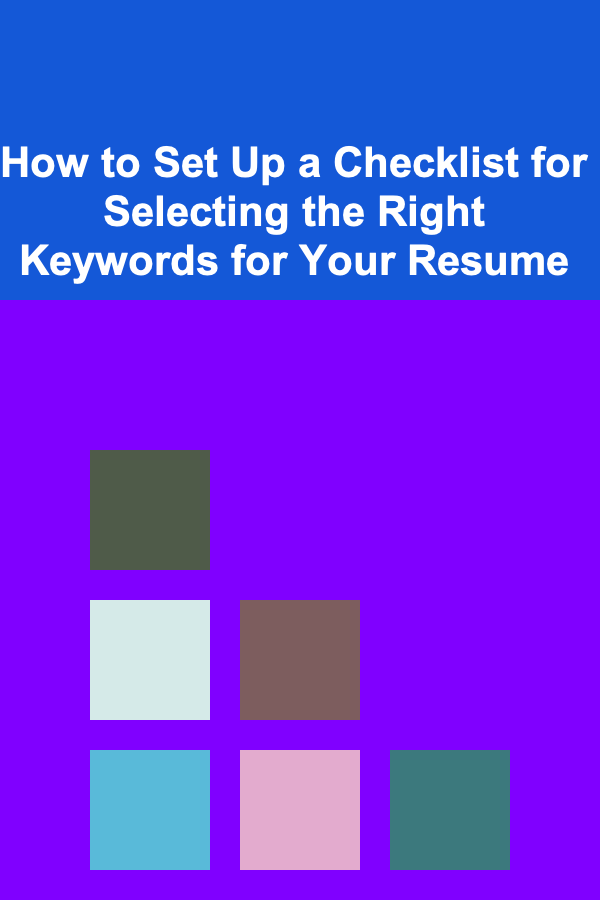
How To Design a Low-Maintenance Garden
ebook include PDF & Audio bundle (Micro Guide)
$12.99$11.99
Limited Time Offer! Order within the next:

Gardens are an extension of your home and can provide a peaceful retreat, a vibrant space for relaxation, or even an area for growing your own food. However, creating and maintaining a garden can often be time-consuming and labor-intensive. For people who want the benefits of a beautiful garden without the constant upkeep, designing a low-maintenance garden is the perfect solution.
In this article, we will explore various strategies and techniques to help you create a stunning low-maintenance garden that thrives with minimal effort. From choosing the right plants to designing an efficient layout, these tips will guide you through the process of building a garden that's easy to care for and enjoyable to use.
Understanding the Concept of Low-Maintenance Gardening
Low-maintenance gardening doesn't mean a garden that requires no attention. It simply refers to a garden that needs less work and fewer resources than a traditional one. The key is to design a space that minimizes the time and effort needed to keep it looking good while still providing beauty and functionality.
Some characteristics of low-maintenance gardens include:
- Minimal weeding: Choosing the right plants can reduce the amount of weeding required.
- Water efficiency: Opting for drought-tolerant plants and installing efficient watering systems can lower water consumption and maintenance.
- Simplicity in design: A well-thought-out design minimizes the need for constant adjustment and upkeep.
- Durable materials: Using hardscaping materials like stones, pavers, and gravel can help reduce the need for ongoing care.
The goal of a low-maintenance garden is to create a space that can mostly take care of itself with occasional attention.
Planning and Design Considerations
Before you start planting, it's important to plan the layout of your garden. A clear plan ensures that you select the right plants and materials for your garden's needs and reduces the need for changes or repairs down the road.
Choose a Design That Suits Your Space
First, assess your space and determine how you want to use the garden. Whether it's for relaxation, entertainment, or growing food, understanding the purpose of the garden will help you design it effectively. Some key questions to consider include:
- What type of environment are you creating? Will it be a formal garden, a wild natural space, or a mix of both?
- How much sunlight does your garden receive? Full sun, partial shade, or full shade will dictate the type of plants that will thrive.
- What is the size of the area? Larger spaces can accommodate more features like pathways, seating areas, and different types of plants.
- What is the climate in your region? Climate plays a huge role in plant selection and watering needs.
Start with Hardscaping
Hardscaping refers to the non-plant elements of your garden, such as paths, patios, fences, and walls. These elements are essential for a low-maintenance garden, as they require little care and can help define the space. You can reduce maintenance needs by focusing on the following:
- Pathways: Gravel, paving stones, or concrete can create easy-to-maintain walkways that reduce the need for grass trimming. These materials also help prevent soil erosion.
- Patios: A patio can serve as an outdoor living room, reducing the need for lawn care. Materials like composite decking, stone, or brick require minimal upkeep.
- Retaining Walls: If your garden has a sloping area, retaining walls can help with drainage and reduce the need for constant garden leveling.
- Borders and Edging: Use edging materials like bricks or metal borders to keep plants contained and prevent overgrowth.
Plant Selection
Choosing the right plants is the most important aspect of a low-maintenance garden. The right plants will thrive in your specific environment with minimal care, allowing you to enjoy the beauty of nature without the hassle.
Opt for Native Plants
Native plants are adapted to your local climate, soil, and weather conditions, which makes them much easier to care for. They tend to be more resilient to pests, diseases, and drought. By choosing native plants, you can reduce the need for chemical fertilizers, pesticides, and excessive watering. Some examples of low-maintenance native plants include:
- Purple Coneflower (Echinacea purpurea): This hardy perennial thrives in full sun and attracts pollinators like bees and butterflies.
- Black-eyed Susan (Rudbeckia hirta): Another native plant that blooms brightly and is easy to care for.
- Switchgrass (Panicum virgatum): This ornamental grass is drought-tolerant and adds texture to your garden.
Choose Drought-Tolerant Plants
Watering is one of the most time-consuming aspects of garden maintenance. To minimize the need for frequent watering, select plants that are drought-tolerant. These plants have adapted to survive with minimal water and will thrive even in dry conditions. Some examples include:
- Lavender: Known for its fragrant flowers and resilience, lavender thrives in well-drained soil and needs little water once established.
- Sedum: Often called "stonecrop," sedum is a succulent that requires very little water and can thrive in poor soil.
- Agave: This succulent is perfect for dry climates and can be grown in arid conditions with very little water.
Consider Evergreen Plants
Evergreen plants keep their foliage year-round, which means you won't need to worry about seasonal clean-up or replanting each year. These plants provide structure and color in your garden, even during the winter months. Some excellent evergreen choices include:
- Boxwood: A versatile evergreen shrub that can be shaped into hedges or topiaries.
- Pine Trees: These trees provide vertical interest and a natural screen.
- Holly: Holly bushes offer glossy, dark green leaves and bright red berries in the winter.
Low-Maintenance Flowering Plants
While most flowering plants require regular deadheading and pruning, some varieties are relatively low-maintenance and will reward you with stunning blooms. These plants are often disease-resistant, self-seeding, and pest-free. Some low-maintenance flowering plants include:
- Daylilies: These hardy flowers bloom profusely and require minimal attention.
- Black-eyed Susan: A cheerful perennial that attracts pollinators but requires little care once established.
- Shasta Daisy: Known for its pure white petals and yellow center, Shasta daisies bloom throughout the summer with minimal maintenance.
Irrigation and Watering Systems
One of the biggest concerns for many gardeners is how to water the garden without spending too much time and effort. Installing an efficient irrigation system can help ensure your garden gets the right amount of water, reducing the need for manual watering and reducing water waste.
Drip Irrigation
Drip irrigation is one of the most efficient ways to water your garden. It delivers water directly to the roots of plants, reducing evaporation and runoff. Drip irrigation systems are relatively easy to install and can be set on timers to water your garden automatically.
Soaker Hoses
Soaker hoses are another great option for low-maintenance watering. These hoses release water evenly along their length, ensuring that plants receive consistent moisture. Soaker hoses can be laid under mulch to further reduce evaporation and are easy to connect to an outdoor faucet or irrigation system.
Smart Watering Systems
If you want to take it a step further, consider installing a smart watering system. These systems use weather data to determine the optimal watering schedule for your garden, ensuring your plants receive just the right amount of water. Smart systems can also be connected to your smartphone, allowing you to monitor and adjust watering times from anywhere.
Mulching and Ground Covers
Mulch and ground covers are essential for a low-maintenance garden. Mulching helps retain soil moisture, suppress weeds, and improve the appearance of garden beds. It also reduces the need for frequent watering and weeding.
Types of Mulch
- Organic Mulch: Bark chips, wood chips, straw, and compost are all excellent organic mulches that enrich the soil as they decompose.
- Inorganic Mulch: Gravel, pebbles, or rubber mulch can be used in areas where you don't want plants to grow but still want a neat, clean look.
Ground Covers
Instead of planting a traditional lawn that requires mowing, consider using ground covers like:
- Creeping Thyme: A fragrant, low-growing herb that attracts pollinators and can tolerate foot traffic.
- Creeping Jenny: This vibrant green ground cover thrives in shady areas and doesn't require mowing.
- Clover: Low-maintenance and drought-tolerant, clover provides a soft, green mat that requires little care.
Regular Maintenance Tasks
Even though your garden is designed to be low-maintenance, some tasks will still need to be done periodically. These tasks are generally quick and easy, ensuring that your garden remains healthy and beautiful with minimal effort.
Pruning
Pruning is necessary to keep your plants in shape and encourage healthy growth. However, for many low-maintenance plants, pruning can be done once or twice a year. Focus on cutting back dead or diseased growth and shaping plants as needed.
Weeding
While a well-designed low-maintenance garden should minimize weeds, some will still inevitably pop up. Regular weeding, especially during the growing season, will help keep your garden tidy. Using mulch and ground covers can reduce the frequency of weeding.
Lawn Care
If you have a lawn, consider reducing its size or replacing it with alternative ground covers. If you do have a lawn, choose a low-maintenance grass variety and water it sparingly. Aerating the soil annually and mowing infrequently will also help keep the lawn healthy with minimal effort.
Conclusion
Designing a low-maintenance garden doesn't mean sacrificing beauty or functionality. By carefully selecting the right plants, using efficient watering systems, and incorporating hardscaping elements, you can create a space that thrives with minimal effort. With thoughtful planning, your garden will be a relaxing, enjoyable, and easy-to-care-for outdoor space for years to come.

How to Create an Inspiration Board for Your Sewing Ideas
Read More
How to Set Up a Checklist for Selecting the Right Keywords for Your Resume
Read More
How To Research the History of Genetics
Read More
How to Analyze Blockchain Data for Actionable Insights
Read More
Investing in Cybersecurity Stocks: A Comprehensive Guide
Read More
Eco-Friendly Feng Shui: Sustainable Practices for Your Home
Read MoreOther Products

How to Create an Inspiration Board for Your Sewing Ideas
Read More
How to Set Up a Checklist for Selecting the Right Keywords for Your Resume
Read More
How To Research the History of Genetics
Read More
How to Analyze Blockchain Data for Actionable Insights
Read More
Investing in Cybersecurity Stocks: A Comprehensive Guide
Read More